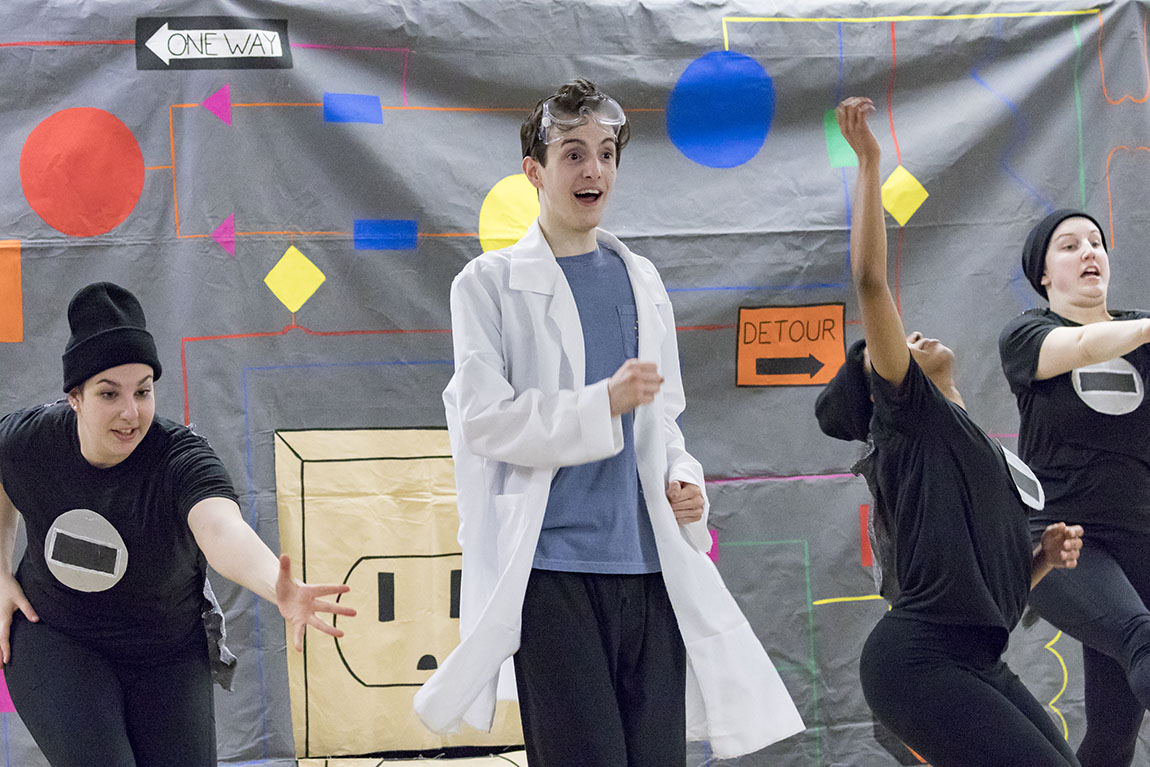A Charged Performance
The student ensemble DanceMax writes and choreographs a show that teaches elementary schoolers about a different concept—like electricity—each year.
By Meghan Kita | May 3, 2019
The set goes up as the tables come down.
The 10 Muhlenberg students who are part of the DanceMax Moving Company performance ensemble thread PVC piping through the top of a large sheet painted to look like a circuit board. At its center is a waist-high depiction of an electrical outlet, cut so the top outlet serves as a pass-through flap.
Meanwhile, Cleveland Elementary staffers roll tables into storage and start sweeping up what’s left from breakfast. One maintenance worker retrieves a mop and a drying fan to clean some spilled milk. Morning announcements crackle over the speaker system as they work.
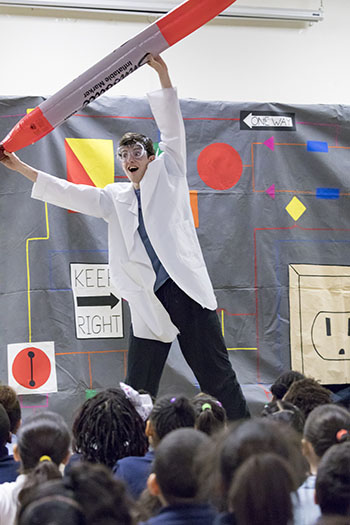 Soon, the 250 first- through fifth-grade students who attend Cleveland file in, sitting on the floor of the basement space that serves as their cafeteria, gym and assembly hall. It’s loud, louder, loudest as more and more students arrive. Once they’re seated, they fill the space beyond the small performance area in front. Principal Naaman Schlegel stands in front of the backdrop and does a rhythmic clap, like you might hear at a sporting event. The kids clap back, and the room falls silent.
Soon, the 250 first- through fifth-grade students who attend Cleveland file in, sitting on the floor of the basement space that serves as their cafeteria, gym and assembly hall. It’s loud, louder, loudest as more and more students arrive. Once they’re seated, they fill the space beyond the small performance area in front. Principal Naaman Schlegel stands in front of the backdrop and does a rhythmic clap, like you might hear at a sporting event. The kids clap back, and the room falls silent.
Teresa VanDenend Sorge, dance lecturer and creator of the ensemble, introduces the Muhlenberg students, who spent the fall semester developing what the Cleveland students are about to see: a performance that uses dance to teach something. This year, it’s about electricity. (Past performances have tackled weather, insects and outer space.)
The kids meet the protagonist, Doctor Watt (Jake Erickson ’21, a theatre and music double major, pictured), in his lab, where there’s a broken outlet he’s supposed to be fixing. Instead, he decides to play with his latest invention: a machine that can shrink or blow up objects. After a few sight gags that delight the audience—an ordinary Sharpie turns into a five-foot inflatable Sharpie! an ordinary drinking straw turns into a five-foot inflatable drinking straw!—Watt accidentally shrinks himself. He travels into the broken outlet to see how he might fix it, where he meets some helpful electrons. Along the way, everyone learns a thing or two about electricity and about dance.
“Dance is an easy form of communication: Not all students like to talk, but they like to move in some capacity,” says Nadia Ureña ’19, a dance and media & communication double major who’s back for her second year in DanceMax (pictured below). “The challenge for this one: All of us know basic science, but trying to make it consumable for children, a lot of things are too complex.”
 Preparing to Perform
Preparing to Perform
That’s why the development process takes place over an academic-year-long, half-credit course called Community Performance Ensemble. Students have a full semester to choose and wrap their heads around a concept that’s part of the elementary school curriculum, choreograph a variety of dances to illustrate that concept and write a script. VanDenend Sorge serves as a guide, but the students work inside and outside class to generate a show—a process most of them have not experienced.
“I never worked on writing a script before. Obviously, I’ve read plenty of them and worked from them, but I’d never written one myself,” Erickson says. “And DanceMax was the first time I ever worked on choreographing anything. It has given me a lot of opportunity to explore things I’ve never done before.”
The ensemble spends the spring “on tour,” with shows almost every Friday. The performance at Cleveland is the 12th of 14, which includes a day with four (!) total performances in Philadelphia-area schools and after-school programs. This format teaches students how to “make it work,” VanDenend Sorge says—in a small space or a large one, with an audience of a handful of kids or hundreds—and also how to use their phones for something other than texting.
“Students have to do research on the places they perform. They have to call somebody and ask them: Tell us about your kids, the programs that you have, the arts classes you offer,” she says. “Many times this is the first time they’ve done that. That’s a really good skill.”
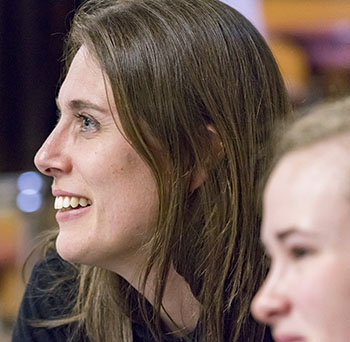 VanDenend Sorge (pictured) and her students partner with Muhlenberg’s Office of Community Engagement (OCE) to plan the visits, organize transportation and work out how to engage in a more meaningful way than just performing and leaving. For example, at each school, one grade will stay after the performance to go through stations where Muhlenberg students teach the children parts of the dance.
VanDenend Sorge (pictured) and her students partner with Muhlenberg’s Office of Community Engagement (OCE) to plan the visits, organize transportation and work out how to engage in a more meaningful way than just performing and leaving. For example, at each school, one grade will stay after the performance to go through stations where Muhlenberg students teach the children parts of the dance.
“It has truly been amazing to see the evolution of this course over time: from the variety of topics covered, to better connecting to the schools’ context and working afterward with a smaller group of kids,” says Beth Halpern, director of the OCE. “DanceMax is another component of our deep partnership with local elementary schools like Cleveland.” (continued below)
DanceMax Performs at Cleveland Elementary
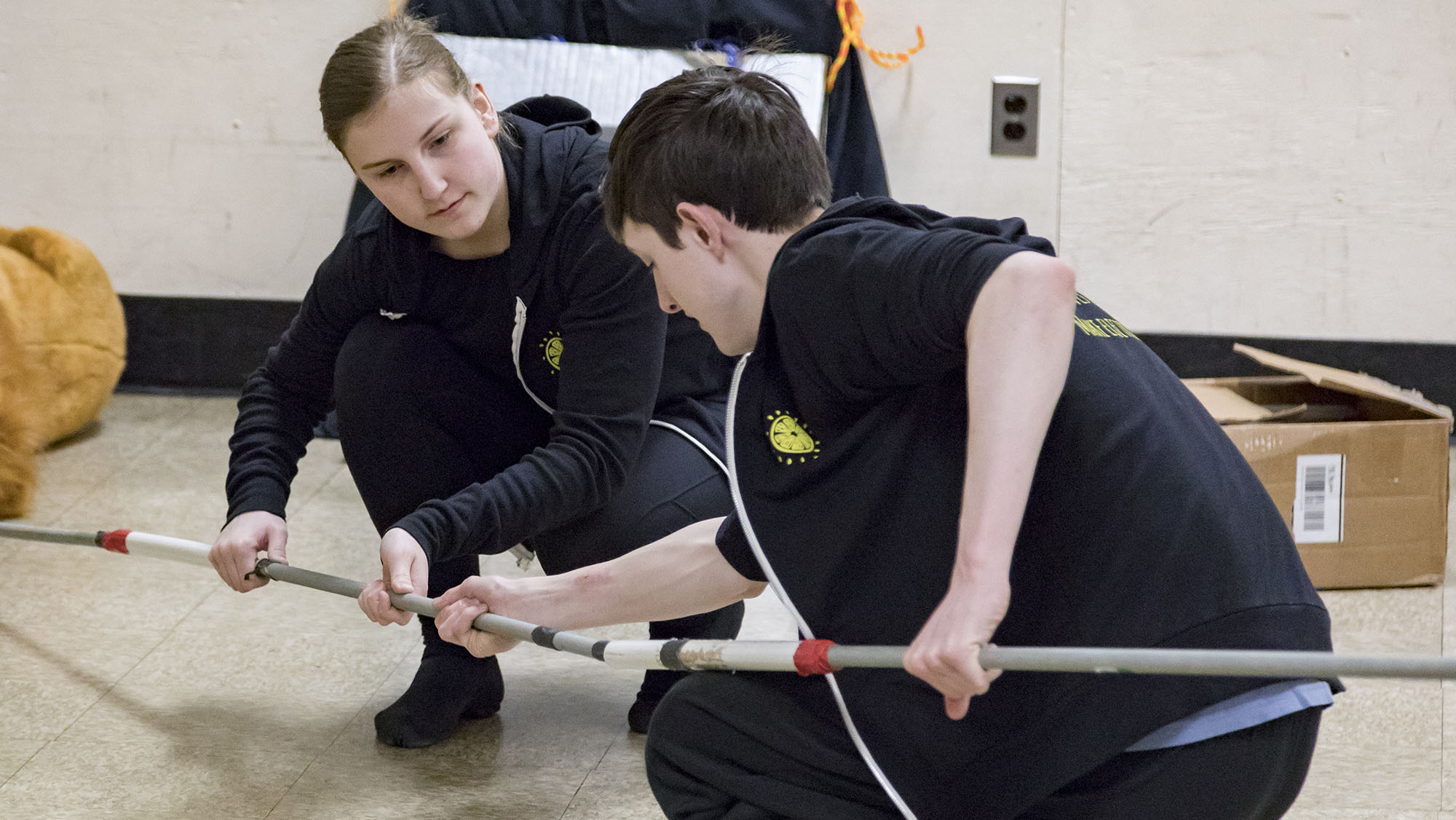
Students must transport their set, props and costumes to and from each performance location and work with the space they're given.
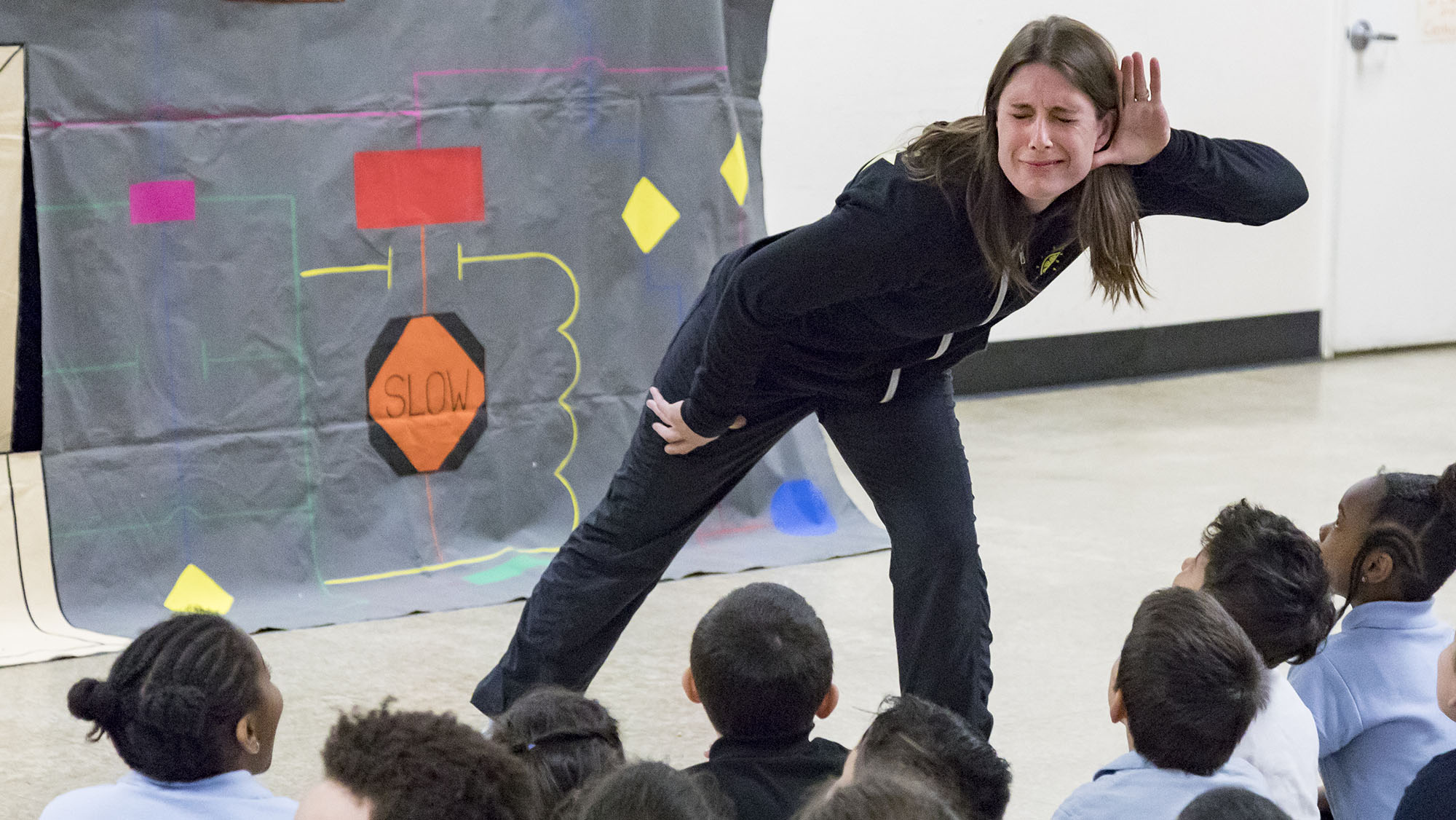
Dance Lecturer Teresa VanDenend Sorge interacts with the Cleveland students before the performance begins.
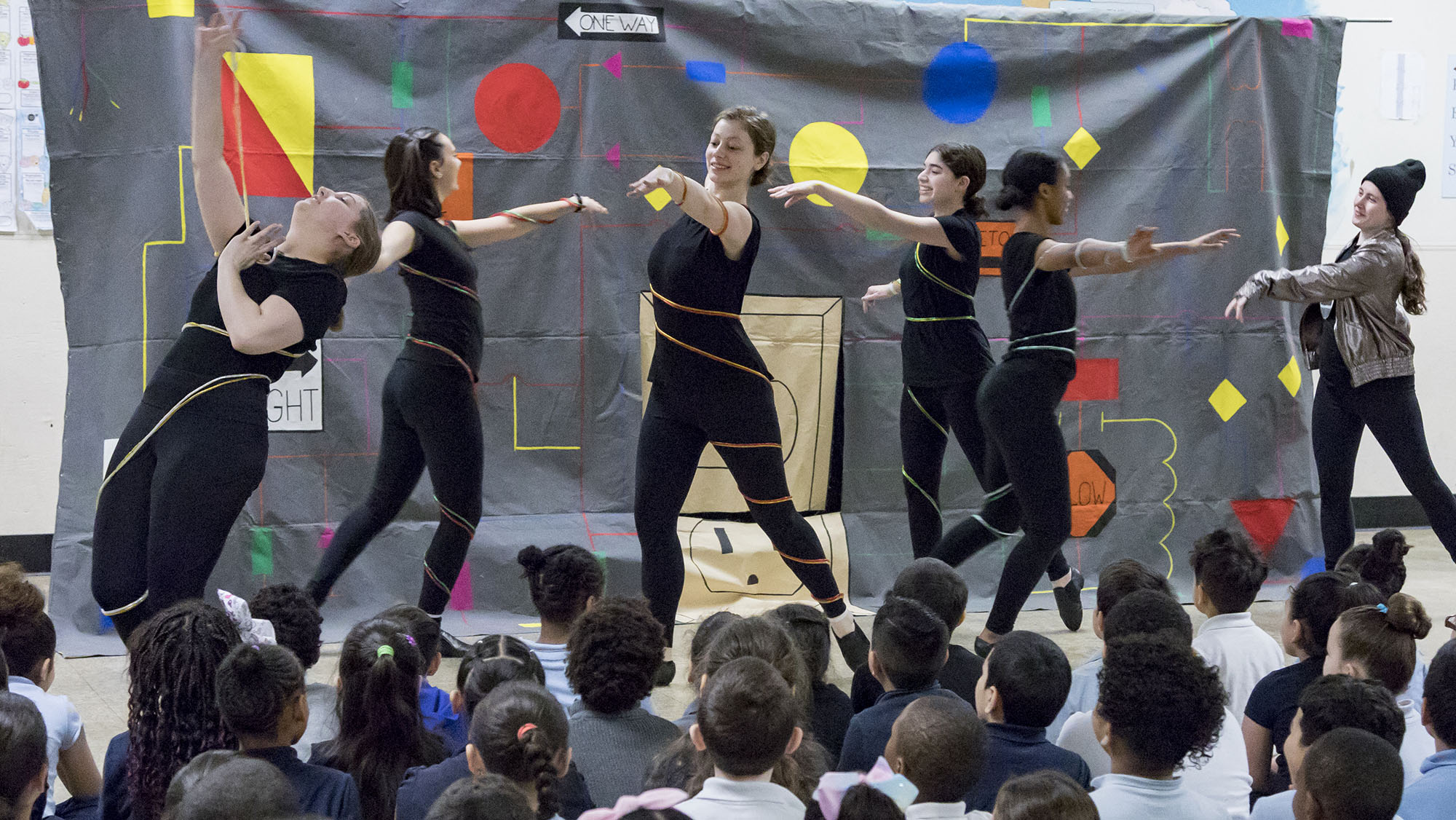
The choreography includes segments from a variety of styles of dance.
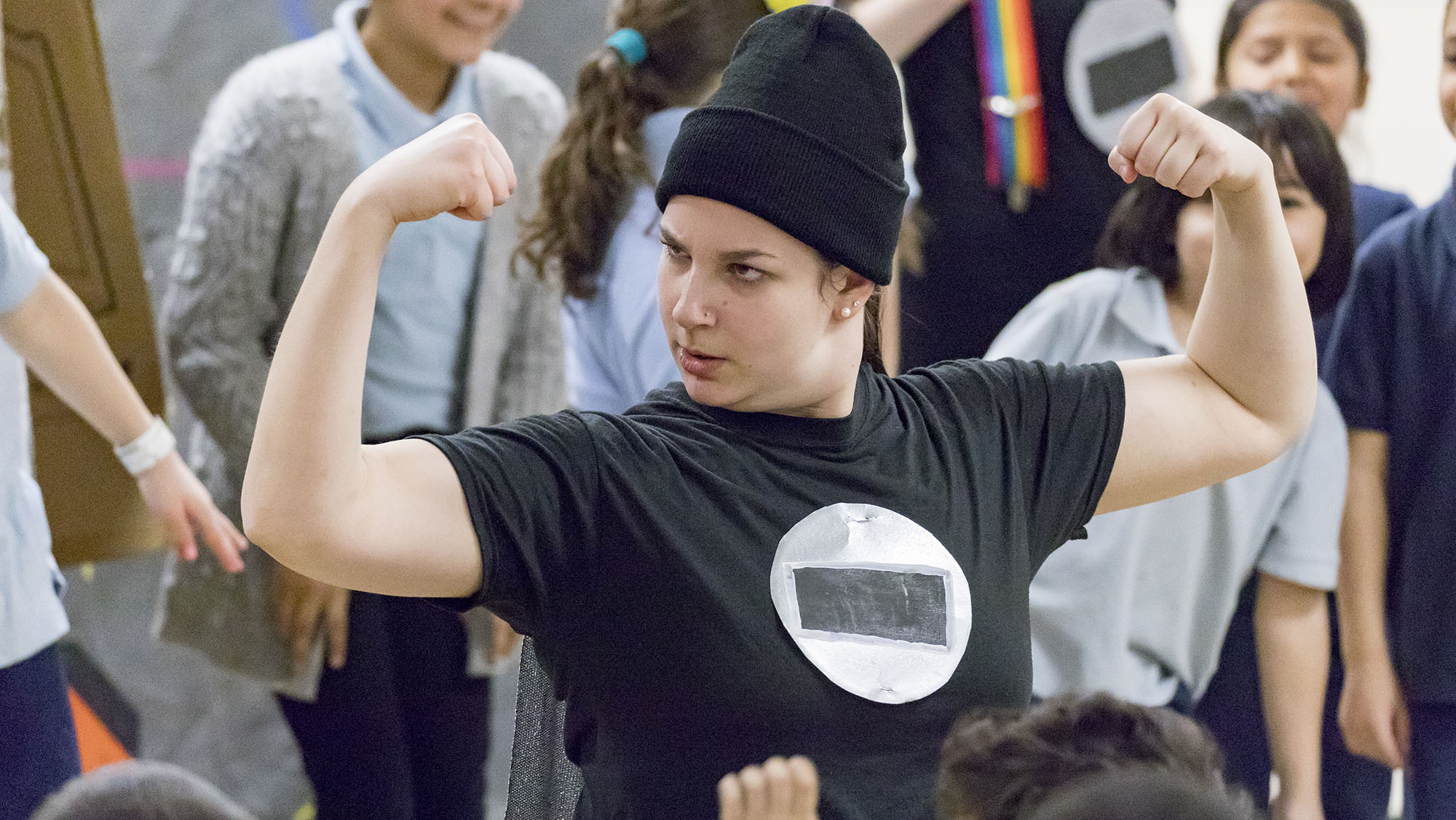
At times, a handful of Cleveland students are invited to participate up front, while others are led through a dance in their seats.

Muhlenberg students fan out through the audience to dance with the Cleveland Elementary children before the performance ends.
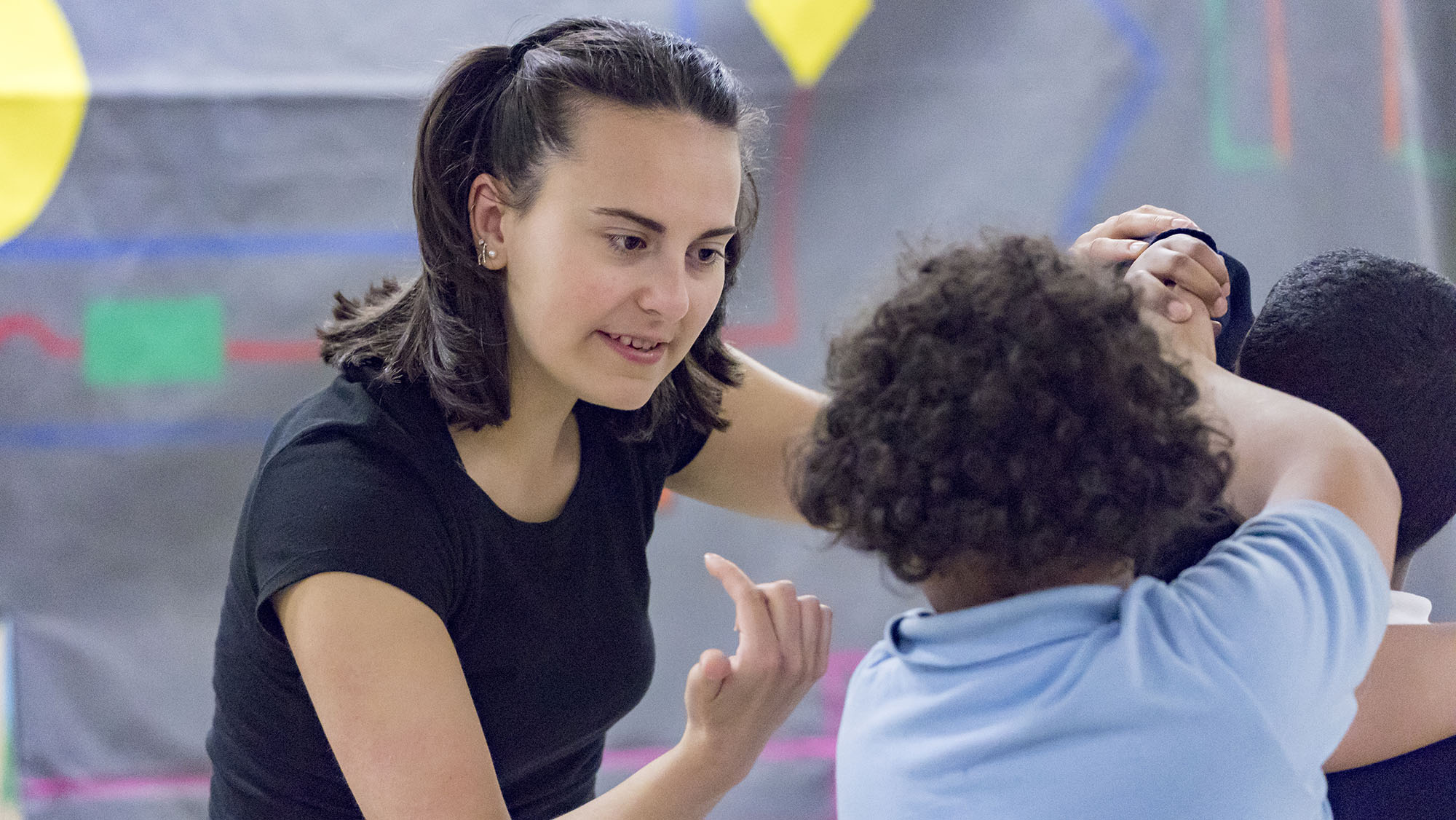
One elementary-school class stays afterward to learn sections of that day's dances from the Muhlenberg students.
Promoting the Arts
VanDenend Sorge modeled the DanceMax ensemble, which launched in 2011, after one she was part of as an undergrad at Hope College in Michigan. Then, she got involved as a way to pay it forward: She still vividly remembers seeing a performance of Mark Twain stories in a church during her time attending a Catholic elementary school, with an actor paddling up the aisle on a skateboard “canoe.”
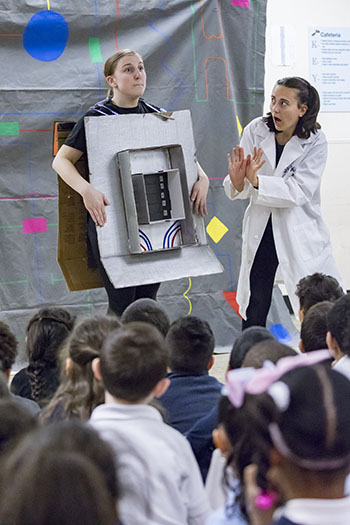 “I think I am an artist because there were programs at my school,” she says. “People came in and did assemblies. I realized, ‘This is something people do.’”
“I think I am an artist because there were programs at my school,” she says. “People came in and did assemblies. I realized, ‘This is something people do.’”
Young students today don’t necessarily have guaranteed access to arts-related aha moments. For example, 97 percent of public elementary schools in the United States do not offer dance, according to the nonprofit Americans for the Arts. The same report found that students of color had less than half the amount of access to arts education as their white peers; the Allentown School District, which hosts the majority of DanceMax performances, serves a student body that’s approximately 70 percent Hispanic, 15 percent black and 10 percent white.
Ureña began taking dance lessons at her local YMCA because nothing was offered at her school: “I see myself in a lot of these kids,” she says. “It’s a very interesting point of view, to be for them what I didn’t always have.”
Erickson says he was lucky to be more interested in theatre than dance before college, because his school had only a theatre program. He didn’t take a formal dance class before coming to Muhlenberg. He recalls performing for younger children in high school, but never the way he does with DanceMax.
“This was the first time I ever traveled to an elementary school. It makes it more accessible,” he says. “Rather than, ‘Get your kids on a bus and bring them here,’ it’s us going to them.”
The Value of a Show
 That means something to first-grade teacher Tim Kearney, who’s finishing his 31st year at Cleveland Elementary and counts DanceMax as one of his favorite assemblies. At the end of the Muhlenberg students’ performance, he asks each of them to state for the audience what they’re studying in college in addition to theatre and dance. Ureña mentions taking classes in Chinese.
That means something to first-grade teacher Tim Kearney, who’s finishing his 31st year at Cleveland Elementary and counts DanceMax as one of his favorite assemblies. At the end of the Muhlenberg students’ performance, he asks each of them to state for the audience what they’re studying in college in addition to theatre and dance. Ureña mentions taking classes in Chinese.
“I wanted our students to hear that these gifted Muhlenberg students went to school like our students. They have favorite subjects like our students. They have goals like our students,” Kearney says. “I wanted Cleveland students to realize Muhlenberg students are real people with hopes and dreams that can come true with hard work, help and good habits.”
Kearney also notes that his students aren’t often exposed to theatre, and that the production teaches a concept in a fun way, “which is the best kind of learning.” VanDenend Sorge agrees.
“I could go on and on about the benefits of arts education,” she says. “The arts open up the parts of our brain that help us understand that we are part of something. The students find their own little voice. It’s so important for kids to know their voices.”
